Discover the secrets to mastering the Decision-Making Spread for effective interpretation. Making important decisions can often leave us feeling perplexed and uncertain. But fear not, as the power of tarot cards can provide clarity and guidance. In this comprehensive guide, we will delve into the art of tarot reading and explore step-by-step how to interpret the Decision-Making Spread. From understanding the layout to identifying key cards and analyzing common patterns, you will learn how to trust your intuition and apply the wisdom of the tarot to your decision-making process. So, let’s embark on this enchanting journey and unlock the insights that await us.
Contents
- Understanding the Decision-Making Spread
- Preparing for a Tarot Reading
- Layout of the Decision-Making Spread
- Interpreting the Decision-Making Spread
- Common Card Patterns and Meanings
- Using Intuitive Prompts
- Avoiding Biases and Assumptions
- Applying the Interpretation to Decision-Making
- Post-Reading Reflection and Action Steps
- Conclusion
-
Frequently Asked Questions
- 1. How does the Decision-Making Spread differ from other tarot spreads?
- 2. Can the Decision-Making Spread predict the future?
- 3. How many cards are typically used in the Decision-Making Spread?
- 4. What is the significance of each position in the spread?
- 5. Can I use the Decision-Making Spread for any type of decision?
- 6. Should I be familiar with tarot card meanings before using the Decision-Making Spread?
- 7. How can I ensure an accurate interpretation of the Decision-Making Spread?
- 8. Are there common mistakes to avoid when using the Decision-Making Spread?
- 9. Can I use the Decision-Making Spread for someone else’s decision?
- 10. Are there alternative spreads I can use alongside the Decision-Making Spread for further guidance?
- References
Understanding the Decision-Making Spread
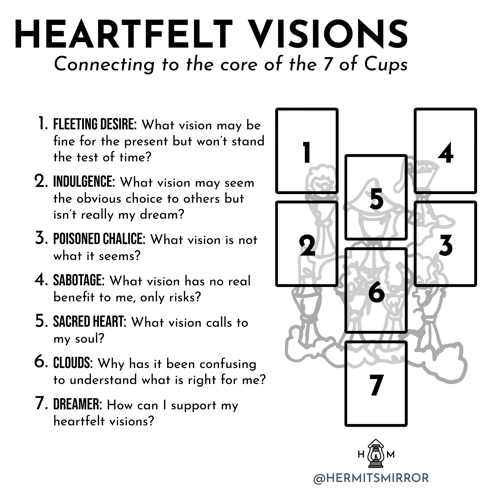
The Decision-Making Spread is a popular tarot card layout designed specifically to provide guidance and insights when faced with important decisions. This powerful spread consists of a predetermined number of cards, typically five or seven, arranged in a specific pattern. Each card represents a different aspect or factor to consider when making your decision. Understanding the significance of each position in the spread is crucial for accurate interpretation. The Decision-Making Spread allows for a deep exploration of the options, consequences, and potential outcomes related to your decision. By analyzing the cards in their respective positions, you can gain valuable insights into the possible paths and choices that lie before you. It is important to approach this spread with an open mind and a willingness to explore the complexities of your decision. In the next sections, we will delve into the steps to prepare for a tarot reading and learn the layout of the Decision-Making Spread in more detail. So, let’s dive right in and unlock the secrets that this spread has in store for us.
Preparing for a Tarot Reading
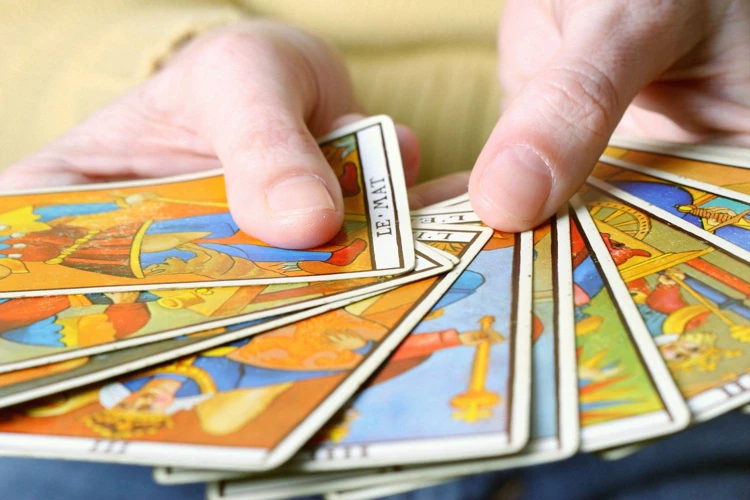
Preparing for a tarot reading is essential to ensure accurate and insightful interpretations. The first step in preparing for a reading is cleansing and shuffling the cards. This process removes any residual energy from previous readings and allows for a fresh start. It is important to approach this cleansing process with intention, focusing on clearing the cards of any energy that may interfere with the upcoming reading. Once the cards are cleansed, it is time to set an intention for the reading. This involves clarifying the purpose of the reading and the specific question or decision you seek guidance on. By setting a clear intention, you create a focused energy that resonates with the tarot cards and enhances their ability to provide meaningful insights. By following these preparatory steps, you create a sacred space for your tarot reading and set the stage for a transformative experience. So, take a moment to cleanse your cards and set your intention before diving into the depths of the Decision-Making Spread, tapping into its benefits and avoiding common mistakes along the way.
Cleansing and Shuffling the Cards
Cleansing and shuffling the cards is an essential step in preparing for a tarot reading, especially when using the Decision-Making Spread. Before diving into your session, it is important to clear the energy of the deck and establish a connection between yourself and the cards. Start by finding a quiet and comfortable space where you can focus. Take a few deep breaths to center yourself and clear any distractions from your mind. To cleanse the cards, you can use various techniques such as smudging with sage or palo santo, placing the deck under moonlight or sunlight, or using a crystal like clear quartz to remove any lingering energies. Once the cards are cleansed, it’s time to shuffle. Hold the deck in your hands and infuse it with your intention for the reading. You can also ask a specific question or set an intention for clarity and guidance. Now, shuffle the cards using a technique that feels natural to you. Some prefer to overhand shuffle, while others may prefer to spread the cards and mix them together. Focus on your question or intention as you shuffle, allowing your energy to flow into the cards. When you feel ready, you can stop shuffling and proceed with the reading. The cleansing and shuffling process helps to create a sacred space and establishes a connection between you, the cards, and the energy surrounding your decision. Now that the cards are ready, we can move on to understanding the significance of each position in the Decision-Making Spread. If you’re curious to learn more about the significance of this spread, you can check out our detailed guide on the significance of the Decision-Making Spread.
Setting an Intention
Setting an intention is a crucial step in preparing for a tarot reading with the Decision-Making Spread. Before beginning the reading, take a moment to define your intention or the purpose behind seeking guidance. This intention serves as a focused energy that directs the flow of the reading towards addressing your specific needs or concerns. When setting your intention, be clear and specific about the decision or situation you wish to explore. Consider what aspect of your decision-making process you want to gain clarity on. For example, you may want insights on potential challenges, hidden opportunities, or the overall outcome of your choices. By setting a clear intention, you provide a framework for the tarot cards to effectively communicate their messages and wisdom to you. It is important to note that setting an intention does not influence or manipulate the cards’ outcome but rather, allows you to align your energy and attention with the specific area you want guidance on. So, take a moment to center yourself, state your intention with conviction, and open yourself to receive the valuable insights that the Decision-Making Spread has to offer.
Layout of the Decision-Making Spread
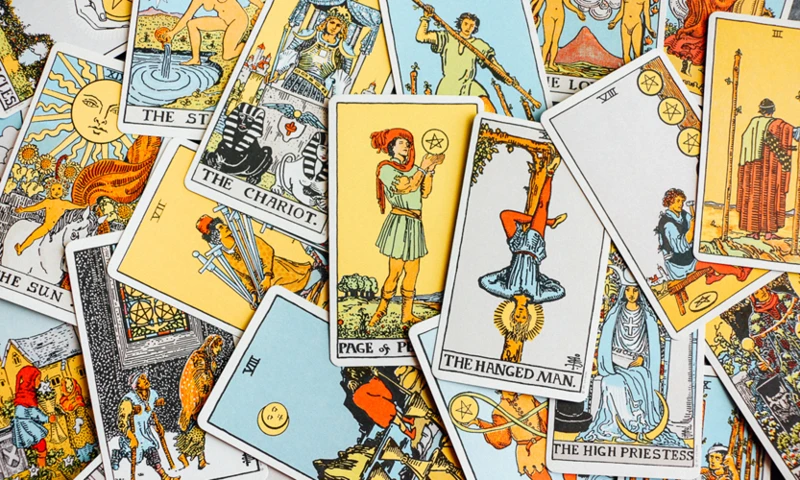
The layout of the Decision-Making Spread consists of a predetermined number of cards arranged in a specific pattern. Typically, the spread comprises five or seven cards, each representing a different aspect to consider when making a decision. One common variation of the Decision-Making Spread involves placing three cards horizontally at the top, representing the past, present, and future influences on the decision. Underneath these cards, two or four cards are placed vertically, signifying the options or choices available. Another variation of the spread includes adding two additional cards, one at the top and one at the bottom, for further insight and clarification. The layout of the spread allows for a comprehensive analysis of the various factors influencing the decision at hand. By examining the cards in their respective positions, you can gain a deeper understanding of the potential outcomes and consequences associated with each choice. Embrace the layout and structure of the Decision-Making Spread as a roadmap to navigate your decision-making process with confidence and clarity.
Significant Positions
When working with the Decision-Making Spread, understanding the significance of each position is essential for accurate interpretation. Let’s explore the significant positions in this spread:
1. Present Situation: This card represents the current state of affairs and provides insight into the circumstances surrounding your decision. It sets the foundation for the reading and offers a starting point for your analysis.
2. Obstacles and Challenges: The card in this position reveals the potential hurdles and obstacles that may arise during your decision-making process. It highlights the difficulties you may face and prepares you to overcome them.
3. Options and Opportunities: This position sheds light on the various choices and possibilities available to you. It explores different pathways and reveals potential opportunities that may arise as a result of your decision.
4. Consequences: The card in this position uncovers the potential outcomes and consequences associated with each option. It helps you understand the short-term and long-term impacts of your decision, guiding you towards making a well-informed choice.
5. Advice: The final card in this spread offers guidance and wisdom from the tarot. It provides additional insights, suggestions, and considerations to aid you in making the most optimal decision.
By paying close attention to each significant position and the cards placed within them, you can gain a comprehensive understanding of the factors influencing your decision. This allows you to make more informed choices and move forward with confidence.
Card Placement and Interpretation Guidelines
Card placement and interpretation guidelines play a crucial role in unlocking the deeper meaning behind the Decision-Making Spread. Each position in the spread represents a specific aspect or factor to consider when making your decision. Understanding the significance of these positions will help you interpret the cards accurately.
The first card, often referred to as the “Present” position, represents the current situation or the main issue at hand. It provides insight into the factors influencing your decision in the present moment. This card sets the foundation for the rest of the spread and provides context for the other cards.
The second card, known as the “Challenges” position, sheds light on the obstacles or challenges you might face during the decision-making process. This card draws attention to potential roadblocks or areas that require careful consideration.
The third card, positioned as “Advice,” offers guidance and wisdom from the tarot. This card provides insight into the best course of action or the potential outcomes of different choices. Pay close attention to the message conveyed by this card, as it can offer valuable suggestions or warnings.
The fourth card, representing the “Opportunities” position, reveals the potential opportunities that may arise from your decision. This card highlights the positive aspects or potential benefits associated with different choices. It encourages you to consider the potential growth or favorable outcomes that await you.
The fifth card, placed as “Outcome,” represents the potential result or outcome of your decision. It provides insight into how your decision may unfold and offers a glimpse into the future. This card can help you assess the long-term implications of different options and evaluate the potential consequences.
It is important to remember that each card’s interpretation should be examined individually as well as within the context of the overall spread. Take note of the symbolism, imagery, and emotions evoked by each card. Consider how the cards interact with one another, forming a cohesive narrative that guides your decision-making process.
By thoroughly analyzing the card placements and using your intuition, you can unlock the hidden messages and meanings within the Decision-Making Spread. The next sections will delve into techniques for interpreting this spread, identifying key cards, and understanding common patterns. So, get ready to delve even deeper into the art of tarot reading and decision-making.
Interpreting the Decision-Making Spread
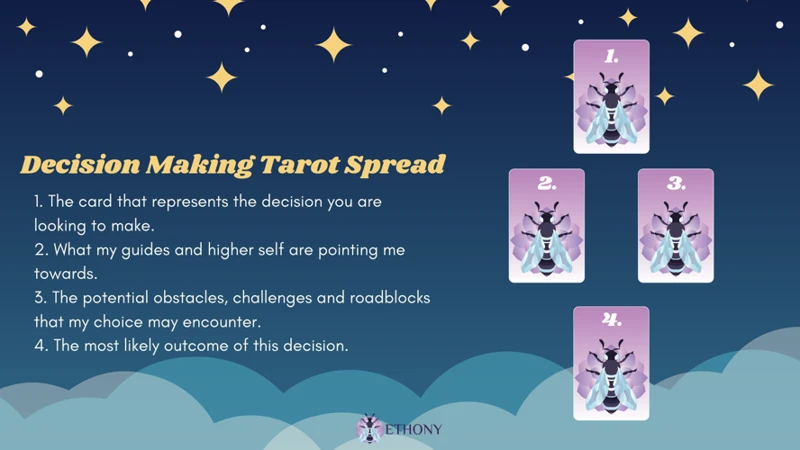
When it comes to interpreting the Decision-Making Spread, there are several key strategies to keep in mind. First and foremost, trust your intuition. Allow your instincts to guide you as you analyze the cards and their meanings. Next, identify key cards that stand out or resonate with your situation. These cards often hold important messages or insights. Additionally, pay attention to card combinations, as they can provide deeper context and nuance to your interpretation. Whether it’s a pair of cards that complement each other or contradict one another, these combinations can offer valuable clues. Consider creating an html list to jot down the key cards and combinations you discover. By organizing your findings, it becomes easier to piece together the overall narrative of the spread. Remember, interpreting the Decision-Making Spread is not an exact science, but rather an art that requires a delicate balance of intuition and analysis. Trust yourself, embrace the symbolism of the tarot cards, and let their wisdom guide you forward.
Trust Your Intuition
Trusting your intuition is a vital aspect of mastering the Decision-Making Spread. When interpreting tarot cards, it is essential to rely on your instincts and inner knowing. Your intuition acts as a guiding force that helps you connect with the deeper meanings and messages within the cards. To tap into your intuition during a reading, create a calm and focused mindset. You can achieve this through relaxation techniques such as deep breathing or meditation. As you lay out the cards and begin interpreting them, pay attention to your initial reactions and gut feelings. Notice any emotions, images, or sensations that arise within you. These subtle cues often hold valuable insights that can enhance your interpretation. Trusting your intuition allows you to go beyond the surface-level meanings of the cards and access a deeper level of understanding. It is important to remember that your intuition is unique to you, and while external references and resources can provide guidance, ultimately, you are the best interpreter of your own intuition. So, as you embark on your tarot journey and explore the Decision-Making Spread, trust in yourself and embrace the wisdom that comes from within.
Identify Key Cards
Identifying key cards is a crucial step in interpreting the Decision-Making Spread. These cards hold significant meaning and can provide valuable insights into your decision-making process. There are several ways to identify key cards in the spread:
1. Card Placement: Pay attention to the position of the cards. Certain positions in the spread may indicate cards that hold higher importance or have a stronger influence on the outcome. For example, the central card or the final card in the spread may hold more weight and significance.
2. Card Imagery: Examine the imagery and symbolism on each card. Look for cards that stand out or resonate with you on a deeper level. These cards may hold a key message or offer important guidance related to your decision.
3. Numerology and Suits: Consider the numbers and suits of the cards. Certain numbers or suits may carry specific meanings and can help you identify the cards that hold relevance to your decision. For example, if you are making a decision related to emotions or relationships, cards from the Cups suit may be particularly significant.
4. Personal Connection: Trust your intuition and personal connection to the cards. Sometimes, a card may simply resonate with you on an intuitive level. This strong connection indicates that the card holds important insights or messages for your decision-making process.
Once you have identified the key cards, take the time to explore their individual meanings and consider how they interact with each other and the overall spread. These key cards can provide clarity, guidance, and a deeper understanding of the decision you are facing.
Consider Card Combinations
When interpreting the Decision-Making Spread, it is essential to consider the combinations of cards that appear together. The interaction between cards can provide deeper insights and reveal additional layers of meaning to your decision-making process. Here are a few key points to keep in mind when analyzing card combinations:
1. Card Pairings: Pay attention to the cards that appear side by side or in close proximity to each other. Their energies may influence or modify each other’s meanings. For example, if you have the Strength card next to the Ace of Swords, it could indicate that you have the inner strength and mental clarity needed to make a bold decision.
2. Cross-Referencing: Look for connections and correlations between cards. For instance, if you have the Three of Cups representing celebration and the Eight of Pentacles signifying hard work, it may suggest that putting in dedicated effort will lead to a joyful outcome.
3. Repeated Symbols: Take note of recurring symbols or imagery across different cards. This repetition can highlight the importance of certain themes or aspects in your decision-making process. For instance, if multiple cards feature water imagery, it may indicate the significance of emotions and intuition in your decision.
4. Numerology: Consider the numerical value of the cards. The numerological associations can provide additional insights into the energies and influences at play. For example, two cards with the number 9 might represent a completion or culmination of a phase in your decision-making journey.
To effectively analyze card combinations, it can be helpful to create a table or list to track the different pairs or groupings that arise during your reading. This visual aid allows you to identify patterns, make connections, and draw conclusions more easily. Remember, the combinations of cards are unique to each reading, so trust your intuition and explore the intricate web of meanings woven by the tarot cards.
Common Card Patterns and Meanings
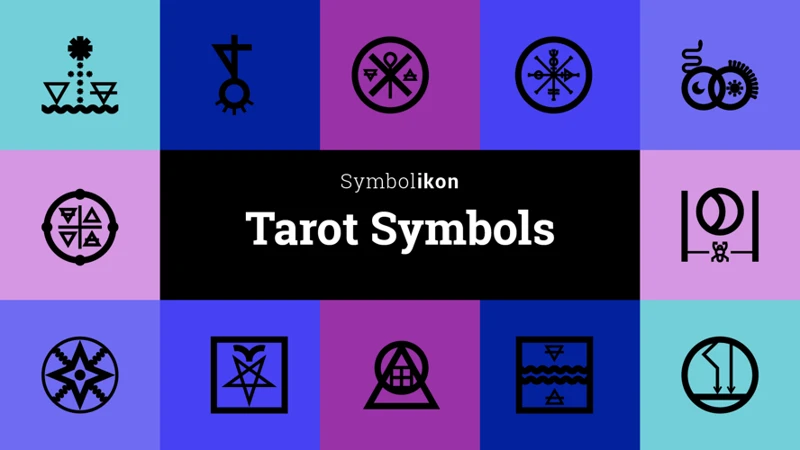
When interpreting the Decision-Making Spread, it is essential to be aware of common card patterns and their meanings. These patterns can provide valuable insights into the overall message of the reading. One common pattern is a positive outcome, where all or most of the cards indicate a favorable outcome for the decision at hand. This can be a reassuring sign, indicating that the path you are considering is likely to lead to success and fulfillment. On the other hand, a pattern indicating a negative outcome may serve as a warning that the decision could have unfavorable consequences. This could be a sign to reevaluate your options and consider alternative paths. Another pattern to watch out for is stagnation, where the cards suggest a lack of progress or movement in relation to the decision. This may suggest the need for further contemplation or exploration of different possibilities. By recognizing these common card patterns and deciphering their meanings, you can gain a deeper understanding of the potential outcomes and factors influencing your decision-making process.
Positive Outcome
When interpreting the Decision-Making Spread, encountering a card that suggests a positive outcome is an exciting prospect. A positive outcome signifies that the decision you are contemplating has the potential to bring you favorable results and lead you towards your desired goals. It serves as a reassurance that you are on the right path and that your decision has a high probability of success. Some cards that commonly indicate a positive outcome include The Sun, The World, The Star, and The Ace of Cups, among others. These cards symbolize happiness, fulfillment, growth, and abundance. The surrounding cards and their interactions can provide further context and insight into the nature of this positive outcome. For example, if you have The Sun card in the position representing opportunities, and it is surrounded by cards such as The Empress and The Wheel of Fortune, it suggests that your decision could potentially bring abundance and favorable circumstances in various aspects of your life. Remember, a positive outcome does not guarantee a smooth journey without any challenges, but it does indicate that the overall result will be in your favor. Embrace the positive energy and be prepared to take action to manifest the best possible outcome for yourself.
Negative Outcome
A negative outcome in the Decision-Making Spread refers to a result that may not align with your desired or expected outcome. When interpreting the cards in this context, it’s important to remember that tarot readings provide guidance, not definitive answers. The appearance of cards indicating a negative outcome suggests potential challenges or obstacles that may arise as a result of your decision.
Here are a few examples of cards that may indicate a negative outcome:
1. The Tower: This card symbolizes sudden and unexpected change or upheaval. It suggests that your decision may lead to a significant disruption or crisis in your life. It serves as a warning to proceed with caution and perhaps reconsider your options.
2. The Five of Cups: This card represents loss, disappointment, and grief. It suggests that your decision may result in emotional setbacks or regrets. It advises you to be prepared for potential sadness or disillusionment and to find ways to cope with these feelings.
3. The Ten of Swords: This card signifies a painful ending or betrayal. It suggests that your decision may lead to a situation where you feel defeated or betrayed. It warns you to be vigilant and to protect yourself from potential harm or manipulation.
When encountering cards indicating a negative outcome, it’s important to remember that they serve as insights and opportunities for reflection. Use this information to consider alternatives, potential risks, and strategies for mitigating the negative impact of your decision. Keep in mind that a negative outcome doesn’t necessarily mean failure, but rather an opportunity for growth and learning. Trust your intuition and use the guidance provided by the tarot cards to navigate challenges and make informed decisions. Remember, the cards are not predetermined fate, but rather tools for self-awareness and empowerment.
Stagnation
When interpreting the Decision-Making Spread, one possible outcome that may arise is stagnation. Stagnation refers to a state of inactivity or lack of progress in relation to your decision. It signifies a period of uncertainty, where forward movement may seem difficult or even impossible. Here are some key factors to consider when encountering the Stagnation card in your spread:
1. Lack of Clarity: The Stagnation card suggests that you may be facing a situation where clarity and direction are lacking. It indicates that you may be feeling stuck or unsure about which path to take. Take this as a signal to pause and reflect on your options before making any hasty decisions.
2. Indecisiveness: Stagnation can also symbolize indecisiveness or an inability to make a choice. It may be a reminder to assess your fears, doubts, or unconscious biases that are hindering your ability to move forward. It calls for introspection and a deeper understanding of yourself and your motivations.
3. Blocked Energy: Stagnation often points to blocked energy or a resistance to change. It may be a sign that external factors or internal limitations are preventing progress. Consider whether there are any patterns or beliefs that are holding you back and explore ways to release or overcome them.
4. Patience and Reflection: While stagnation may initially feel frustrating, it can also offer an opportunity for patience and reflection. Use this time to gain clarity, seek deeper insights, and weigh the pros and cons of your options. Consider seeking outside perspectives or engaging in activities that stimulate your creativity and intuition.
Remember, stagnation is not necessarily a negative outcome. It can serve as a valuable pause in your decision-making process, allowing you to gather your thoughts and reassess your priorities. Embrace this moment as an opportunity for growth, patience, and self-discovery.
Using Intuitive Prompts

When working with the Decision-Making Spread, it’s essential to tap into your intuition and connect with the deeper meanings of the cards. One effective way to enhance your intuitive abilities is through the use of intuitive prompts. These prompts serve as catalysts for reflection and exploration, allowing you to delve deeper into the symbolism and messages of the cards. One method is through journaling and reflection, where you can write down your initial impressions, thoughts, and emotions that arise when looking at each card. Another approach is through meditation and visualization. Take a few moments to quiet your mind, focus on a specific card, and allow images, sensations, or messages to come to you. By using these intuitive prompts, you can uncover profound insights and gain a better understanding of the guidance the tarot cards are offering. Remember to trust your instincts and embrace the wisdom that emerges from within.
Journaling and Reflection
Journaling and reflection are essential tools for deepening your understanding and interpretation of the Decision-Making Spread. Once you have completed a tarot reading using this spread, taking the time to journal and reflect on the experience can provide valuable insights and further clarity. One way to approach journaling is by creating a table with two columns. In the first column, write down the positions of the cards in the Decision-Making Spread, and in the second column, record your interpretations and any intuitive insights you received. This helps you track your thoughts and observations, allowing you to identify patterns and connections between the cards. Reflecting on your journal entries can reveal deeper meanings and help you gain a fresh perspective on your decision-making process. Take note of any recurring themes, emotions, or intuitive prompts that arise during your reflection. Additionally, you can jot down any action steps or intentions that arise from your interpretation, providing a tangible plan to implement the insights gained from the tarot reading. Remember, journaling and reflection are personal practices, so feel free to adapt them to suit your style and preferences. Trust the wisdom that emerges from within and honor your unique journey of self-discovery.
Meditation and Visualization
Meditation and visualization are powerful techniques that can enhance your tarot reading and deepen your understanding of the Decision-Making Spread. After completing the interpretation process, taking time for reflection and introspection is essential for gaining further insight into your decision. One way to do this is through meditation. Find a quiet and comfortable space where you can sit undisturbed. Close your eyes and take several deep breaths to center yourself. Allow your mind to become still and focused. As you breathe in and out, visualize the different cards from the spread. See each image in vivid detail, and imagine yourself stepping into the scene depicted on the card. Engage your senses and explore the emotions, thoughts, and sensations that arise. Pay attention to any messages or insights that come through during this practice. Another technique to consider is journaling. After your meditation, take out your journal and write down any thoughts, feelings, or intuitive hits that came up during the visualization. You can also write down any additional questions that you may have for further exploration. By combining meditation and visualization with the Decision-Making Spread, you can tap into your intuition and gain a deeper understanding of the guidance offered by the cards.
Avoiding Biases and Assumptions
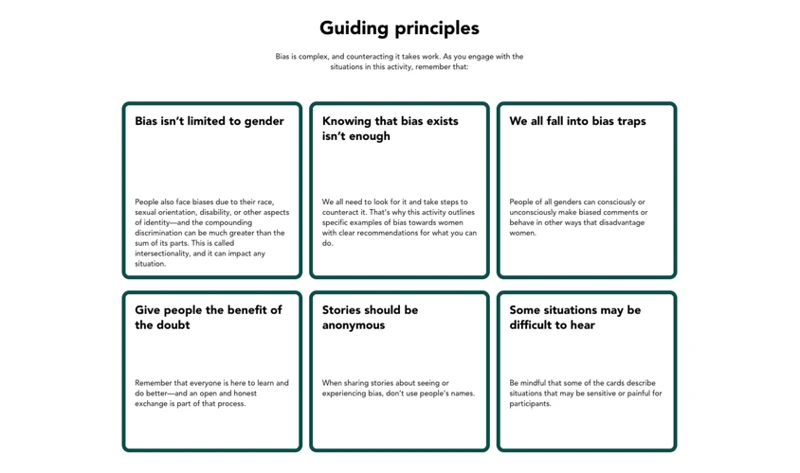
When interpreting the tarot cards in the Decision-Making Spread, it is crucial to approach the process with objectivity and avoid biases and assumptions that may cloud your judgment. Tarot readings are based on symbolism and intuition, and it’s natural for personal beliefs and preconceived notions to influence interpretation. However, to ensure a clear and accurate reading, it is essential to separate your own biases from the cards’ messages. One way to do this is by adopting a neutral mindset, setting aside personal opinions or desires related to the decision at hand. Additionally, be aware of any assumptions you may have about the cards or their meanings. Each card in the tarot deck holds multiple layers of symbolism, and it’s important to consider each card’s unique context within the spread. Avoid jumping to conclusions based on limited interpretations or prior expectations. By approaching the reading with an open mind and a willingness to explore all possibilities, you can ensure a more objective and insightful interpretation of the Decision-Making Spread. Remember, the tarot is a tool for guidance and self-reflection, and by remaining unbiased, you can tap into its wisdom more effectively.
Applying the Interpretation to Decision-Making
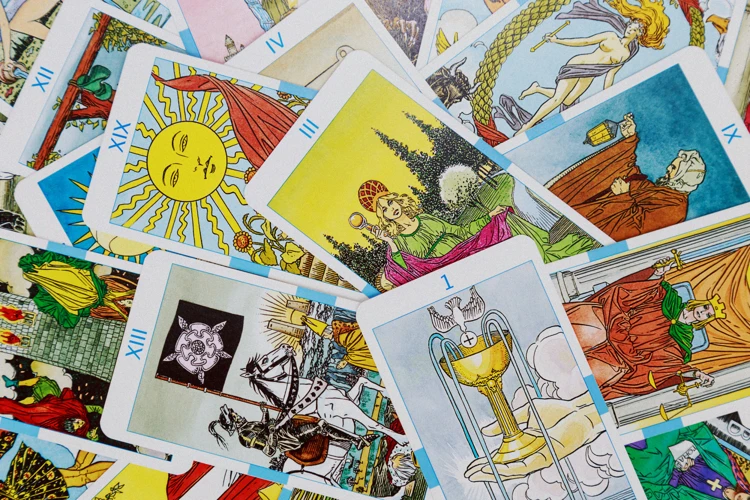
Once you have interpreted the Decision-Making Spread, the next crucial step is to apply the insights gained to your decision-making process. This involves acknowledging both the limitations and possibilities that the tarot reading has revealed. One way to do this is by recognizing that while the cards can offer guidance, they do not hold all the answers. It is essential to consider personal factors that may influence your decision, such as values, goals, and intuition. A great approach is to create a pros and cons list, where you can weigh the benefits and drawbacks of each option based on the interpretation of the cards. Additionally, take into account any significant intuitive prompts or feelings that arose during the reading. By combining the wisdom of the tarot with your own innate wisdom, you can make more informed decisions that align with your true desires and values. Remember, tarot is a tool to assist you in your decision-making process, but ultimately, the power to choose lies within you.
Acknowledge Limitations and Possibilities
When applying the interpretation of the Decision-Making Spread to your decision-making process, it is crucial to acknowledge both the limitations and possibilities that arise. Tarot cards offer guidance and insights, but they are not a foolproof method of predicting the future. It is essential to recognize that the cards provide potential outcomes and suggestions, but the final decision ultimately rests with you. Understanding the limitations of tarot can help you approach the interpretation with a realistic mindset. On the other hand, embracing the possibilities that the cards present allows you to explore new insights and perspectives. Keep in mind that the tarot is a tool for self-reflection and introspection, and the interpretations should be viewed as guidance rather than absolutes. By acknowledging both the limitations and possibilities, you can strike a balance between relying on external guidance and trusting your own instincts and judgment. It is this combination that will lead to effective decision-making and empower you to make choices aligned with your true desires and goals.
Considering Personal Factors
When applying the interpretation of the Decision-Making Spread to your decision-making process, it’s crucial to consider personal factors that may influence your choices. These factors can vary greatly from person to person and can have a significant impact on how you interpret the cards. Here are a few important personal factors to take into account:
1. Emotions and Gut Feelings: Trust your instincts and pay attention to any strong emotions or gut feelings that arise during the reading. Emotions can provide valuable insights into your true desires and fears, helping you make a decision that aligns with your authentic self.
2. Core Values and Beliefs: Consider your core values and beliefs when interpreting the cards. What principles or ideals are most important to you? How do they align with the options presented in the spread? Understanding how your values and beliefs come into play can guide you towards a decision that resonates with your true self.
3. Past Experiences: Reflect on past experiences that may be relevant to the decision at hand. Has a similar situation arisen before? What were the outcomes? Take note of any patterns or recurring themes that may help inform your decision-making process.
4. Personal Goals and Aspirations: Think about your long-term goals, aspirations, and what you hope to achieve in the future. How do the options presented in the spread align with your vision for yourself? Consider whether the choices presented are in line with your ambitions and what you truly desire.
5. Practical Considerations: Take practical considerations into account, such as financial implications, time constraints, and logistical factors. These practicalities can play a significant role in shaping the feasibility and viability of your options.
It’s important to note that everyone’s personal factors will differ, and what may be relevant for one person may not hold the same weight for another. Trust your intuition and use these personal factors as a guide to help you make a decision that feels true to you. By considering these aspects, you’ll be able to approach your decision-making process with a well-rounded perspective that incorporates both external influences and internal values.
Post-Reading Reflection and Action Steps
After completing a tarot reading using the powerful Decision-Making Spread, it is crucial to engage in post-reading reflection and take actionable steps based on the insights gained. One effective way to reflect on the reading is by debriefing and journaling. Write down your initial thoughts, emotions, and any key takeaways from the reading. This process allows you to gain a deeper understanding of the message conveyed by the cards and how it relates to your decision. Another valuable practice is to implement the decisions and learn from the outcomes. Take the necessary actions based on the guidance received and observe the results. This hands-on approach enables you to actively participate in the decision-making process and learn from the consequences. Remember, the tarot is a tool for guidance, and it is up to you to apply the insights gained and navigate your path with confidence. So, take your time to reflect, journal, and take action, and watch as the tarot guides you toward a more empowered decision-making process.
Debriefing and Journaling
Debriefing and journaling are essential steps to take after completing a tarot reading using the Decision-Making Spread. These practices allow you to reflect on the insights gained from the cards and integrate them into your decision-making process. After interpreting the spread, take a moment to debrief by asking yourself questions such as: What stood out to me in this reading? Did any particular cards or patterns catch my attention? Reflect on your initial reactions and emotions, allowing yourself to dig deeper into their meanings. This process of debriefing helps solidify your understanding and connection with the cards.
Journaling is another powerful tool for further exploration. Grab your notebook or journal and write down your interpretations, thoughts, and any additional insights that may have come up during the reading. It can be helpful to record the position of each card and write a detailed description of your interpretation. Take note of any surprises or unexpected messages that emerged. Additionally, journaling allows you to track your progress over time, so you can revisit past readings and learn from your experiences.
As you reflect and journal, remember to approach the process with an open mind and a willingness to explore your feelings and thoughts. Don’t be afraid to ask yourself challenging questions and delve into the nuances of your decision. This practice of debriefing and journaling enables you to gain clarity, deepen your self-awareness, and make more informed decisions in the future.
By taking the time to debrief and journal, you continue your tarot journey beyond the reading itself. Your insights and reflections become a valuable resource for personal growth and decision-making in various areas of your life. So grab your pen, find a quiet space, and let your thoughts and emotions flow onto the pages of your journal.
Implementing Decisions and Learning from Outcomes
Implementing Decisions and Learning from Outcomes is a crucial step in the decision-making process that allows us to put our chosen course of action into motion and gain valuable insights from the results. Once you have made a decision based on the interpretation of the Decision-Making Spread, it is important to take action and implement the chosen path. This requires commitment, confidence, and a willingness to embrace the unknown. As you move forward, pay close attention to the outcomes and consequences of your decision. Observe how the situation unfolds and assess whether it aligns with the insights and predictions provided by the tarot cards. Keep in mind that outcomes may not always match our expectations, and that’s perfectly normal. Sometimes, even the best decisions can lead to unexpected results. It is through these experiences that we can learn, grow, and refine our decision-making skills. Reflect on the outcomes and consider what lessons, if any, can be gleaned from the situation. This introspection will help you refine your approach to future decisions and enhance your ability to interpret the tarot cards more effectively. Remember, learning from outcomes is an ongoing process, and each decision presents an opportunity for growth and self-discovery. So embrace the journey, trust in your intuition, and let the tarot guide you towards making decisions that serve your highest good.
Conclusion
In conclusion, mastering the Decision-Making Spread can serve as a valuable tool in your decision-making process. Through understanding the layout, interpreting the cards, and exploring common patterns, you can gain clarity and insights into the choices at hand. It is important to trust your intuition and consider the significance of each card within the spread. Avoid biases and assumptions, and instead approach the reading with an open mind and a willingness to explore all possibilities. Remember to reflect on the reading, journal your thoughts, and implement the decisions made. Tarot readings are not set in stone, but rather provide guidance and perspectives that can aid in making informed choices. By acknowledging both limitations and possibilities, and considering personal factors, you can apply the interpretation to your decision-making with confidence. So, embrace the power of the Decision-Making Spread and let it be your trusted companion as you navigate through life’s important decisions.
Frequently Asked Questions
1. How does the Decision-Making Spread differ from other tarot spreads?
The Decision-Making Spread is specifically tailored to address the complexities of decision-making. Unlike other spreads, which may focus on general life guidance or specific areas of inquiry, this spread is designed to provide insights and clarity when making important choices.
2. Can the Decision-Making Spread predict the future?
The Decision-Making Spread is not meant to predict the future with absolute certainty. Rather, it provides a deeper understanding of the factors and potential outcomes surrounding a decision, allowing you to make more informed choices based on the information at hand.
3. How many cards are typically used in the Decision-Making Spread?
The number of cards used in the Decision-Making Spread can vary, but it usually consists of five or seven cards. The specific number of cards chosen depends on personal preference and the level of detail desired in the reading.
4. What is the significance of each position in the spread?
Each position in the Decision-Making Spread represents a different aspect or factor to consider when making a decision. For example, one position may represent the pros of a particular choice, while another may signify the potential challenges. Understanding the significance of each position allows for a more nuanced interpretation.
5. Can I use the Decision-Making Spread for any type of decision?
Yes, the Decision-Making Spread can be used for a wide range of decisions, whether they are personal, professional, or even spiritual in nature. The spread’s versatility makes it a valuable tool for gaining insights into various aspects of life.
6. Should I be familiar with tarot card meanings before using the Decision-Making Spread?
Having a basic understanding of tarot card meanings can be helpful when using the Decision-Making Spread. However, it is not a strict requirement. The cards themselves, along with their placement in the spread, provide context and additional layers of meaning.
7. How can I ensure an accurate interpretation of the Decision-Making Spread?
An accurate interpretation of the Decision-Making Spread comes with practice and trust in your intuition. It is essential to approach the reading with an open mind, allowing your intuition to guide you as you explore the cards and their connections.
8. Are there common mistakes to avoid when using the Decision-Making Spread?
Absolutely, there are common mistakes to watch out for. Some of the most common include imposing personal biases on the interpretation, rushing to conclusions without considering all the cards, and overestimating the predictive power of the spread. Being aware of these pitfalls can help you avoid them.
9. Can I use the Decision-Making Spread for someone else’s decision?
Yes, you can use the Decision-Making Spread for someone else’s decision with their permission. However, it is important to remember that the interpretation should be guided by their unique circumstances and perspective.
10. Are there alternative spreads I can use alongside the Decision-Making Spread for further guidance?
Absolutely. Many tarot practitioners combine the Decision-Making Spread with other spreads, such as the Celtic Cross or the Three-Card Spread, to gain additional insights and perspectives. Exploring different spreads can enhance your overall tarot reading practice.






